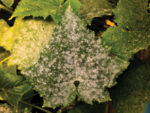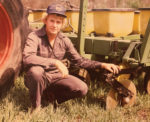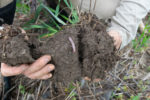Advertise Follow Us
Articles by Laura Barrera
From getting a thick stand of cover crops to terminating them at the right time, roller-crimping experts explain the key components for weed control in organic no-till.
Read More
Reducing Fertilizer, Boosting Yields with Sap Analysis
Crop consultant John Kempf explains why plant sap analysis can provide the best agronomic information no-tillers will ever collect and how to make use of the results on your farm.
Read More
Prioritizing Soil Health to Protect Profitability for Generations to Come
The Crave family sees soil health as a key to reducing inputs, lowering machinery costs and creating more value-added products for long-term success and sustainability.
Read More
Reminiscing on No-Till’s Revolution
Four no-till pioneers share how they’ve seen the practice change over the last few decades and what factors will play a role in its future.
Read More
Deploy Cover Crops to Drop Your Herbicide Use
Steve Groff shares how planting green into a thick, tall stand of cover crops can help keep troublesome weeds under control while significantly reducing herbicide use.
Read More
How No-Tillers Can Combat the Evolution of Herbicide Resistance
Growing metabolism-based resistance is the greatest problem no-tillers will face with weed control, but effective use of herbicides, using multiple modes of action, and controlling the weed seed bank at harvest can all help.
Read More
2nd Annual Cover Crop Benchmark Study
No-Tillers Continuing Their Cover Crop Investment
Cover Crop Strategies’ exclusive benchmark study finds more growers dedicated to covers, reducing conventional tillage.
Read More
5 On-Farm Studies Help No-Tiller Measure Profitability and Calculate ROI
No-till veteran Marion Calmer explains how on-farm research has helped him determine the best row spacings, seeding populations, fertility and residue management programs for maximum profitability.
Read More
7 Strategies for Reducing Slug and Vole Problems
No-tillers can battle these two pests with scouting, sound planting practices, strategic cover crop management, the right field equipment and some help from predators.
Read More















